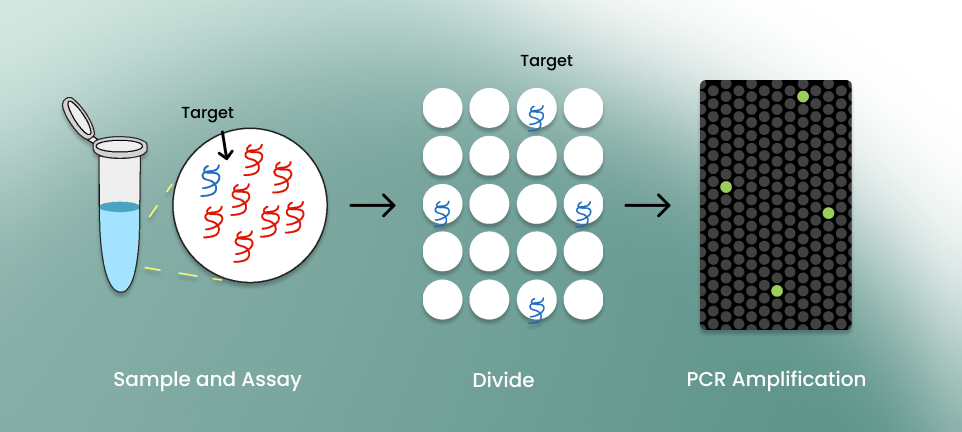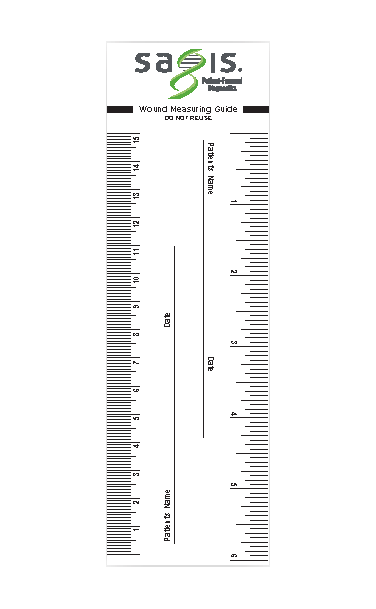PCR Wound Analysis
Precision Microbiology for Wound Care
Powered by Modern PCR Technology
Sagis Molecular is committed to providing unparalleled precision and detail in its lab reports, surpassing the capabilities of traditional methods. Our advanced PCR technology allows us to identify the specific pathogens responsible for infections with unmatched accuracy. Moreover, we take into account underlying factors that may contribute to treatment resistance, ensuring comprehensive and personalized treatment plans for each patient. By leveraging this level of detail, we maximize the chances of a successful outcome, giving patients the best possible care.
In our pursuit of accuracy, we go the extra mile to ensure reliable results. All negative results undergo a rigorous process, being run twice when needed to eliminate any chance of error. This additional step helps us rule out any potential pathogens that may be outside the scope of our PCR panels. By employing this comprehensive approach, we leave no stone unturned in our quest for precision, enabling healthcare providers to make informed decisions based on the most reliable data available.
Sagis is at the forefront of molecular testing, harnessing the potential of PCR to bring you unmatched precision and specificity. With our advanced techniques and commitment to excellence, we empower healthcare professionals with the tools they need for effective treatment.
Wound PCR Analysis Explained
qPCR (quantitative Polymerase Chain Reaction) testing is a molecular diagnostic technique that can detect and quantify the presence of bacteria in a wound sample. The test involves using specific primers and probes that target the DNA of the bacteria of interest, such as Staphylococcus aureus. The DNA is amplified through multiple cycles of heating and cooling, and the amount of DNA present is quantified in real-time using fluorescent dyes. This allows for accurate and sensitive detection of bacteria in the wound sample, which can be useful for wound analysis and management.

Testing for antibiotic resistance is important for several reasons:
Overall, testing for antibiotic resistance is essential for effective management of bacterial infections and preventing the spread of antibiotic-resistant bacteria.
Accurate treatment
Testing for antibiotic resistance helps healthcare providers choose the most effective antibiotic for treating a bacterial infection. If the bacterial strain is found to be resistant to a particular antibiotic, alternative treatment options can be explored. This ensures that patients receive the appropriate treatment and reduce the risk of treatment failure or recurrence.
Preventing the spread of resistance
Testing for antibiotic resistance can help to identify outbreaks of resistant bacteria and prevent their spread. It enables healthcare providers to take appropriate infection control measures, such as isolating infected patients and implementing appropriate disinfection protocols, to prevent the spread of resistant bacteria
Reducing unnecessary use of antibiotics
Testing for antibiotic resistance can also help to reduce the unnecessary use of antibiotics. It can help to avoid the use of broad-spectrum antibiotics that may be ineffective against resistant bacteria and increase the risk of side effects and complications.
Wound Collection Guide
Obtain, collect, label, and package samples
Procedure
- Open sterile PCR transport kit containing transport medium and remove swab.
- If wound is dry, moisten tip of swab with transport fluid or sterile preservative-free saline. If wound is moist after cleaning, this step is not necessary.
- Without touching swab to surrounding wound edges or skin, rotate tip of swab over a 1 cm area of open wound for 5 seconds.
- Return swab to transport tube with medium. Snap off swab stick where marked and tightly seal tube for shipment before placing in biohazard bag.
Specifically for swab samples: send these to Sagis STAT due to specimen stability requirements.
Collection Tools

PCR Test or e-Swab

Biohazard Bag
Comes with an absorbent pad and a second pocket for the requisition form.

Wound Measuring Guide
Biopsy collection
Wound/Lesion Swab
Although most lower extremity foot and leg ulcers may be venous, arterial, or neuropathic, patients presenting with a lower extremity nonhealing wound of long duration, which may not be responding to treatment (2 months or longer), should be considered for a wound biopsy (punch or curettage) procedure to determine the presence or absence of malignancy or inflammatory condition.
Ideally, two biopsies should be performed to include both the base of the ulcer (for malignancy) and the wound margin (for inflammatory causes).
Submitting a Specimen
Submitting an E-swab for Wound PCR
Gain clear instructions on proper E-swab specimen handling for molecular wound PCR analysis. The video covers critical steps such as properly securing the specimen in the swab container, completing the requisition, and maintaining specimen stability for accurate results.